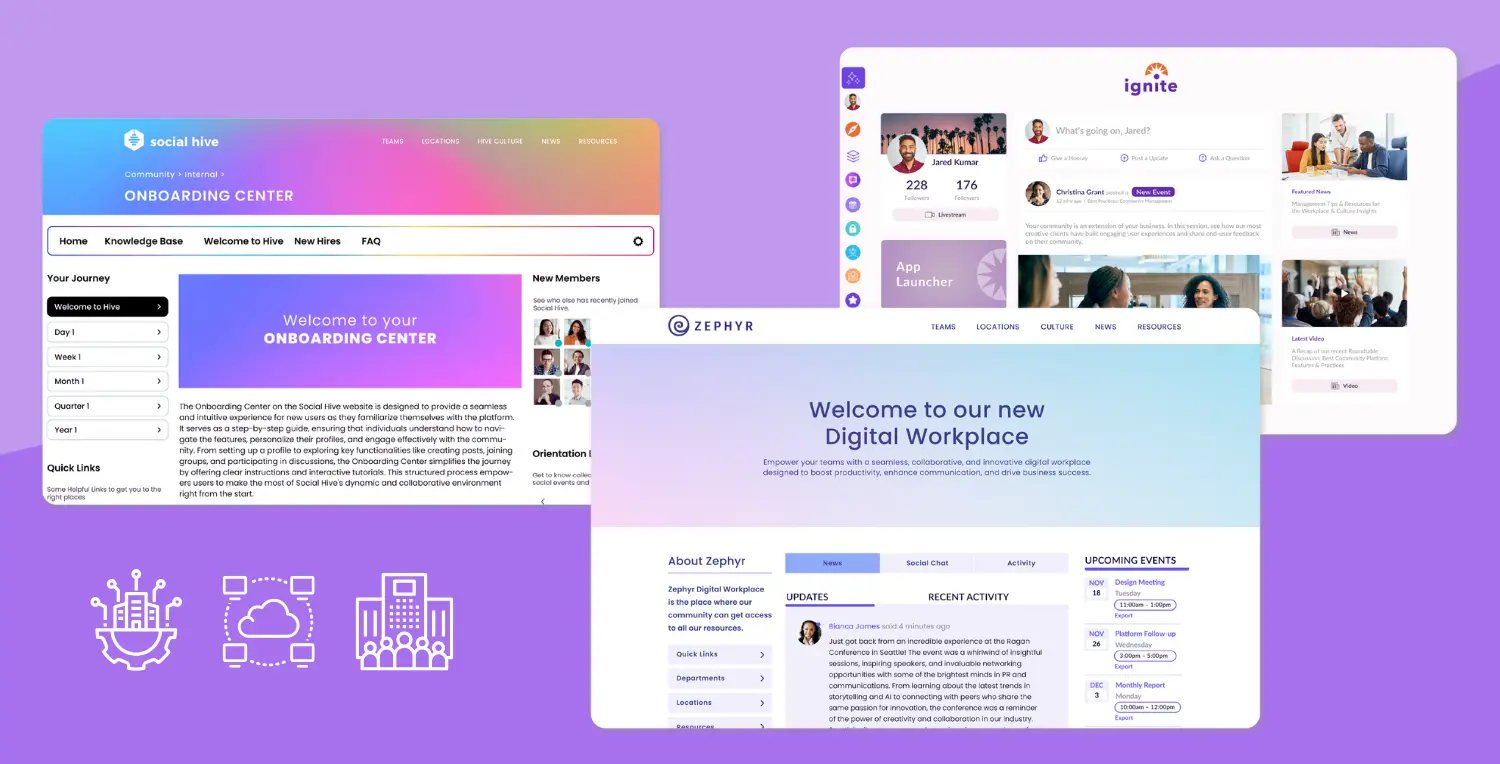Organizations need practical tools to streamline communication, collaboration, and information sharing in today's fast-paced business world. Intranets have long played a vital role in achieving these goals. Still, with the advent of social media and evolving workplace dynamics, a social intranet has emerged as a powerful alternative. In this post, we’ll explain what a social intranet is and the benefits of a social intranet to help you make an informed decision about which is best for your organization.
First, let’s define a traditional intranet and explore the challenges and disadvantages many intranet platforms face.
What is a Traditional Intranet?
A traditional intranet is a private, internal network organizations use to provide employees access to company resources, updates, and documents. It typically includes features such as:
- Document Management: Store, organize, and access important company documents in a centralized location.
- Content Management: Create, edit, and publish internal communication and collaboration content.
- Employee Directory: Access contact information for colleagues and departments.
- Company News and Announcements: Share updates and news with the entire organization.
Limitations of Traditional Intranets
While traditional intranets have served organizations well for years, their limitations are becoming increasingly apparent in the modern workplace. Some common criticisms include:
- Lack of Engagement: Traditional intranets are often viewed as one-way communication channels, making fostering genuine engagement and collaboration difficult.
- Inflexible Structure: Traditional intranets can be rigid and difficult to customize, limiting their ability to adapt to evolving business needs.
- Limited Social Features: Traditional intranets need more social and interactive features that have become essential in today's connected world.
Enter the social intranet. In response to these limitations, the concept of a social intranet has emerged. Let’s define what exactly social intranet are, how they differ and the common features of popular social intranet platforms.
What is a Social Intranet?
A social intranet is a private, internal network for an organization that integrates social features like collaboration tools, messaging, and social networking elements to improve communication and engagement among employees.
Simply put, a social intranet combines the functionality of a traditional intranet with social networking features that encourage collaboration, knowledge sharing, and engagement.
Social Intranet vs Social Media: What’s the Difference?
Most of us immediately conjure up social media and networking when we hear "social." Twitter, Facebook, and Instagram come to mind as examples. By exchanging news and updates, we all use these websites to stay in touch with family and friends. What precisely is a social intranet, then?
A social intranet typically serves the same purposes as social media, but its access is limited to company employees. It is an internal platform that promotes information exchange, interactions among coworkers, and collaboration around shared objectives.
Social Intranet Features
Key features of a social intranet include:
- Social Networking: Build connections and foster relationships with colleagues through social networking features like profiles, groups, and discussion forums.
- Collaboration Tools: Collaborate on projects, share ideas, and work together more effectively with shared calendars, task management, and real-time document collaboration.
- Personalization: Customize your intranet experience with personalized content, dashboards, and targeted notifications.
- Analytics and Reporting: Gain insights into employee engagement, content performance, and collaboration trends with robust analytics and reporting features.
Benefits of a Social Intranet
There are many platforms and ways to build a social intranet. And the good news is that you can choose those that are suitable for your company. But, why do you need a social intranet? By blending the best features of traditional intranets with social networking capabilities, social intranets offer several key benefits:
- Increased Engagement: Social intranets foster a sense of community and encourage two-way communication, leading to higher employee engagement and satisfaction levels.
- Enhanced Collaboration: Social intranets facilitate collaboration and knowledge sharing, helping teams work more efficiently and effectively.
- Better Decision Making: Social intranets enable organizations to tap into the collective intelligence of their workforce, leading to better-informed decisions and improved business outcomes.
Social Intranet Examples & Platforms
Some of the top and most popular social intranet platforms include:
Learn more about our intranet partners like Simpplr, Unily, and LumApps, recognized as leaders on the Gartner® Magic Quadrant™ for Intranet Packaged Solutions.

How to Implement a Social Intranet Solution for Your Business
Choosing between a traditional and social intranet ultimately depends on your organization's specific needs and objectives. A conventional intranet might suffice if your primary goal is to provide a centralized hub for accessing company resources and information. However, if you're looking to build a more connected, collaborative, and engaged workforce, a social intranet could be the ideal solution.
At Social Edge Consulting, we specialize in providing social intranet services and solutions to meet your organization's unique requirements. Our expertise ensures a seamless transition and maximizes the benefits of a social intranet for your team. Contact us today or book a social intranet demo to learn more about how we can help your business thrive with a modern social intranet.












